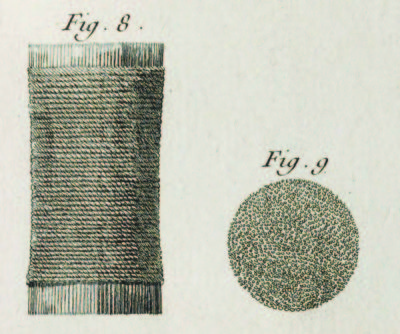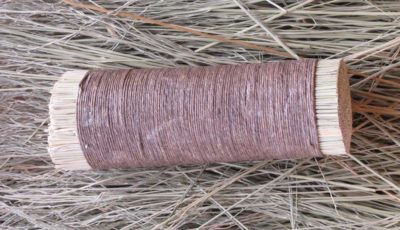A Juncus Polissoir – I

The polissoirs I commission from a local craft-broom-maker employ the materials with which he normally works, namely broom straw (sorghum) and nylon twine, with woven outer sheaths. It makes perfect sense given the scale that Polissoir, Inc. has become; he needs to use materials and techniques with which he is familiar and facile, and for which he has (for the moment) a sorta-reliable supply of raw materials.


The only variance from this is the Model 296 polissoir first commissioned by Thomas Lie-Nielsen for sale through his enterprise. In this version, made as close to the original description in L’art du Menuisier as is practicable, the outer sheath is a wrapped linen cord rather than woven sorghum.
In reviewing the sorghum polissoirs (and To Make As Perfectly As Possible) marqueteur Yannick Chastang chided me for mis-identifying the fibers used in traditional polissoirs, asserting that the genuine article used a wetlands rush rather than sorghum, and that sorghum broom straw was an inferior material for polissoirs. The first point is certainly a fair one, the second is a judgement/preference call I will discuss in a subsequent post. It’s like saying a Ruger 10/22 rifle is superior to a Smith and Wesson .50 caliber revolver. It depends on what you are trying to accomplish with the tool.

In the original text, Roubo uses the term “de jonc ordinaire” (common rush; the connection of “de jonc” to “Juncus” is not a great leap) for the plant fiber used in polissoirs. Our dealing with that term highlights the difficulties of a translation project (and explains the reason this is a very slow writing process), especially when the primary meaning of words mutates over time. Although French was probably the first codified modern language, it has changed little in the past three or four centuries, the hierarchy of definitions for words has definitely shifted. Words for which the first definition might be XYZ in one time period might find definition WYZ to be the second, third, or even eighth-ranked definition in an earlier or later dictionary. This is a struggle Michele, Philippe, and I wrestle with continually as we work our way through the original treatise. Dictionaries roughly contemporaneous to Roubo declare that the word “de jonc” can mean reed, rush, straw, grass, hay and several other definitions I cannot recall at the moment. But Yannick’s assertion that I chose the wrong word in English based on my editorial discretion is certainly not unfair.
With that idea in mind, I set out to explore the topic more fully. One problem, though, resides in the question, “Which Juncus?” After all, this is a huge genus consisting of several hundred species.
And, where would I find it?
Stay tuned.


Join the Conversation!